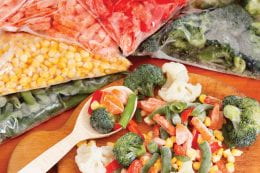
When buying frozen entrées, it is important to read the instructions for safe preparation. Just because the entrée looks brown and precooked on the package picture, it may be a raw product. A recent recall of raw frozen breaded stuffed chicken due to a Salmonella outbreak is a reminder of this important step.
Not all microwave foods are pre-cooked to be heated in the microwave. Some are raw foods that require cooking in the oven. Therefore, reading the package for preparation instructions is important. If the microwave is recommended cooking appliance, know the wattage of your oven to get the proper amount of heat to the food.
Whether using the microwave or the oven, always use a food thermometer to check the internal temperature. Learn more at USDA Preparing Frozen Food.

